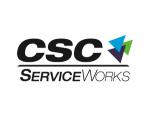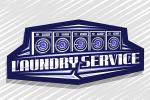CHICAGO — Laundromats rely on signs to help customers enjoy a better service experience. Here are some things to think about so that your store can provide the best displays and infographics possible.
“There should be no spelling errors and the grammar needs to make sense,” says Nick Gausling (www.nickgausling.com), managing director of Romy Group, a consultant who works with B2C businesses that stand out through specialization. “All visuals and text should be crisp and easy to see. If you miss these basics, not only does it look unprofessional, it will also undermine whatever you’re trying to communicate.”
Rachel McPherson, creative marketing specialist for Card Concepts Inc. (CCI), says the service-based laundromats her company works with always want to communicate important information, such as credit card acceptance, the latest time a customer can start a wash load, or reminding customers that the store isn’t responsible for lost or stolen items.
“But we find, in visiting locations, that there is an overabundance of … a printed sheet of paper stuck to the wall, and then there’s like 10 of them all in the same spot,” she says. “And it’s like no one is reading any of this because it’s too much, too many different things.”
“When creating exterior or interior signage, it’s important not to overwhelm your customers,” says Liza Kirsh, chief marketing officer for Dymapak, which develops and produces child-resistant packaging. “If there’s too much clutter on a sign, it will likely be ignored. Be as concise as possible.”
“People have short attention spans,” Gausling warns. “Modern society bombards us with so much information that we get accustomed to pivoting topics within fractions of a second. If you say too much, then you haven’t said anything, because customers will miss your point.”
CCI offers free signage and poster capabilities through its payment software’s marketing program, McPherson says: “Of course, you know you have to put up those notification signage pieces, but we try to help our owners do it in a way … that looks clean, that looks professional, that looks visually appealing.”
“The most important thing to consider is customer experience,” says Gausling. “If you walk into a self-service business that you know nothing about, what information do you need to see on the signage in order to have a good experience? That’s the boat your customers are in.”
“Focus on color and font. You want it to be easy to read and pleasing to the eye,” says Kirsh. “Usually, you want a nice contrast between the lettering and the background to make your words ‘pop.’ Lastly, bring value to your customers through your signage. What are their [frequently asked questions]? Don’t just have a sign to have one. Make sure there’s a purpose behind each sign you create.”
Using a laundromat is one of the few service experiences that invites customers to perform the work themselves. If the business is unattended, signage takes on even greater importance.
It can deliver information when the owner can’t be there or is busy helping other customers. A customer doesn’t necessarily have to approach a person to ask a question if the store’s signage, equipment decals, etc., provide enough information to at least get them started or pointed in the right direction.
Check back Wednesday for the conclusion!
Have a question or comment? E-mail our editor Bruce Beggs at [email protected].






















